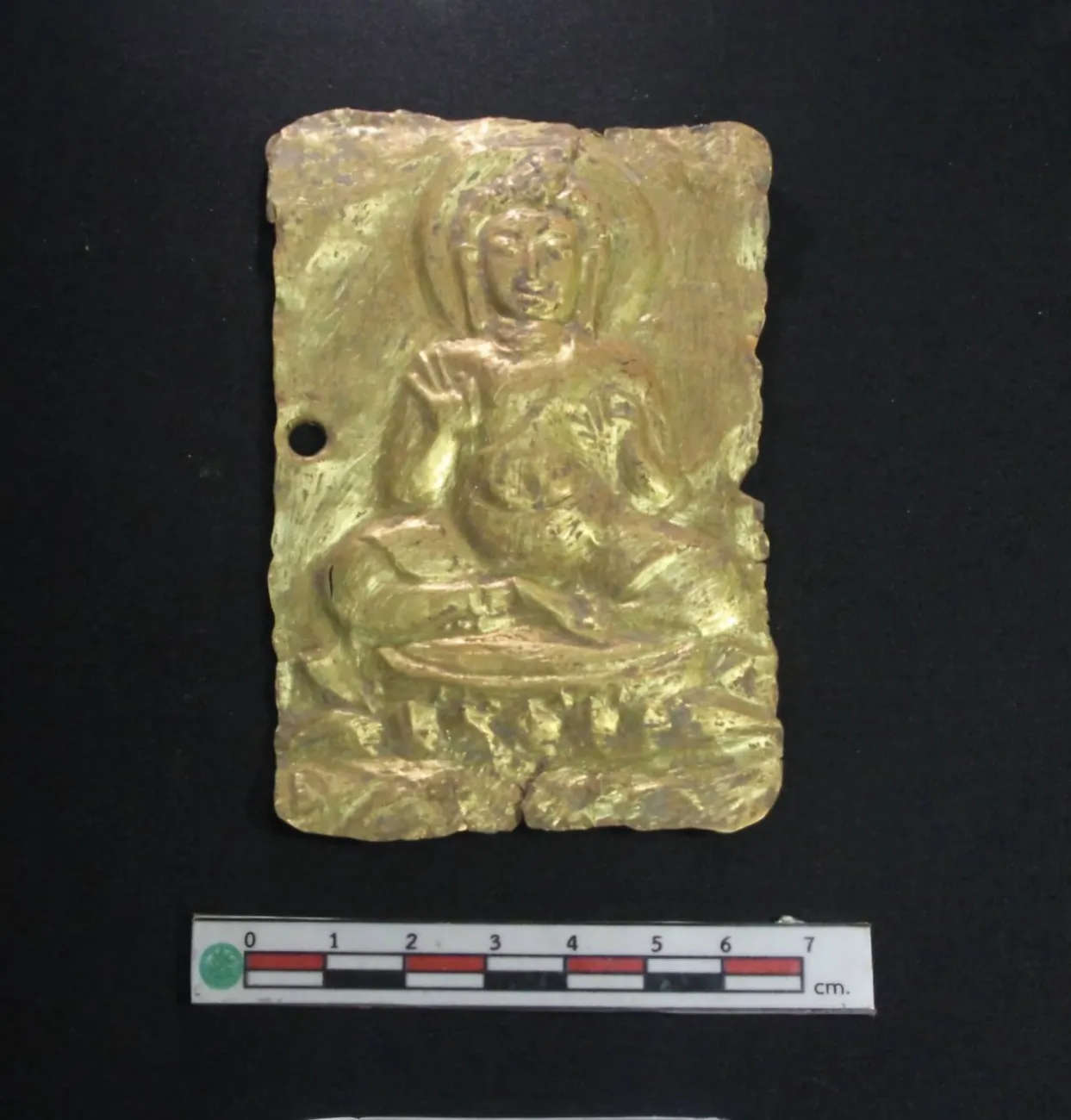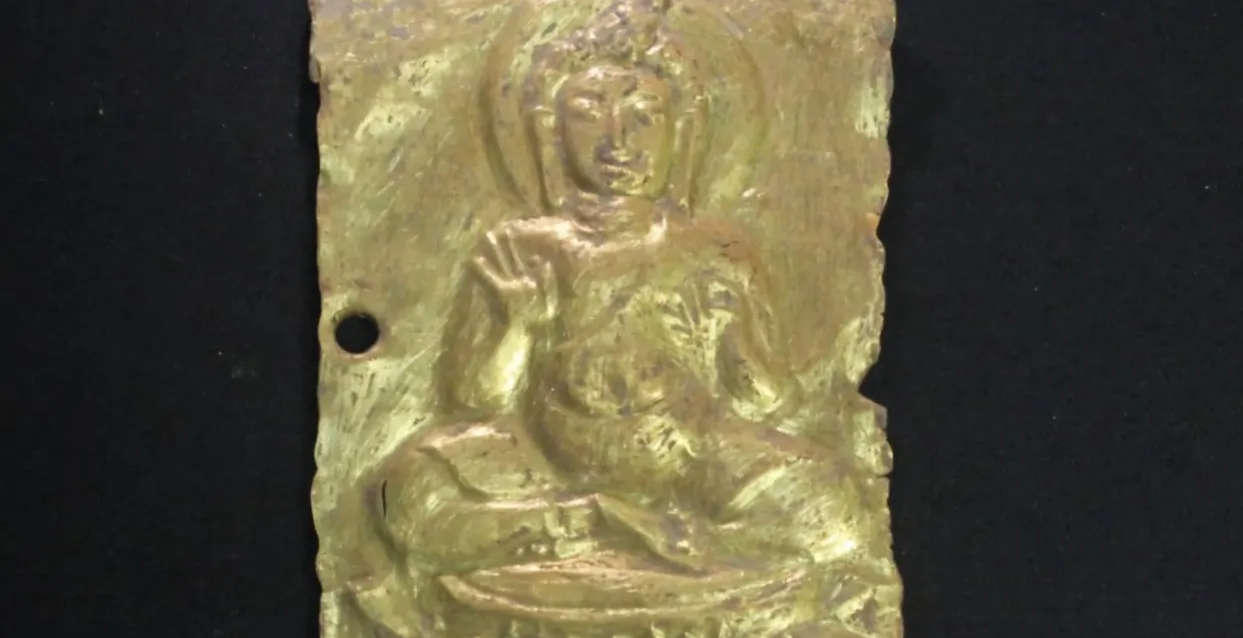Major archaeological discoveries have been made in northeastern Thailand, where some rare Buddhist artifacts believed to date back more than 1,300 years have been unearthed during an excavation by the state Department of Fine Arts , including a seated Buddha image embossed in gold, which is almost intact, and a richly detailed metal plaque, both indicative of the region’s deep spiritual and artistic heritage. The discovery was made during a conservation project at Wat Thammachak Semaram, a historic site in Sung Noen district known for an important monument depicting the reclining Buddha.
Phnombootra Chadrajoti, director-general of Thailand’s Department of Fine Arts, said the objects were discovered in April during a project to reduce underground moisture around the base of the reclining Buddha. At a depth of about 1.3 meters, archaeologists found an earthenware container containing 33 small ornamental objects made of bronze, silver and gold. “These findings are extraordinary,” Phnombootra said in a note. “They offer significant information about the craftsmanship and religious devotion of the time.”
The finds include gold rings, silver earrings and various bronze ornaments. One silver earring in the shape of a spiral stood out for its similarity to pieces found at ancient sites in southern Thailand, including Phu Khao Thong in Ranong and Tha Chana in Surat Thani, both dating to early periods of Buddhist influence. Even more remarkable, however, were the three larger objects unearthed in a separate excavation on April 30: an embossed gold plaque, an embossed lead alloy plaque, and a fragile earthen pile containing embedded metal foils.


The golden plaque, measuring 8 by 12.5 centimeters, depicts a seated Buddha in the teaching posture, or “vitarka mudra,” with a prominent halo, shell-like curls, elongated earlobes and flowing robes. The figure is seated cross-legged on a lotus-shaped pedestal. A small hole on one side suggests that it may have been used as a hanging ornament or as a ritual object.
The second plaque, made of a lead and tin alloy, depicts a Buddha standing on a curved arch, flanked by two attendants. Although damaged on the right side, the remaining figure on the left is believed to represent the deity Brahma. The style and iconography are very reminiscent of Buddhist art of the Dvaravati period, a tradition that flourished in central Thailand between the 6th and 11th centuries.
Phnombootra noted similarities between the newly discovered embossment and a plaque discovered decades ago at Wat Phra Prathon Chedi (a 1,300-year-old site located in Nakhon Pathom province), now on display in the Dvaravati art room at the National Museum in Bangkok. These finds reaffirm the historical importance of Sung Noen as an important religious center during the Dvaravati era.
The third find, a pile of earth with three sheets overlapping among fragments of plaster, is still being studied because of its fragile condition. It was located behind the head of the reclining Buddha, an area that archaeologists now suspect may have been used as a hiding place or ceremonial storage.
All recovered artifacts have been transferred to the Phimai National Museum for cataloging, conservation and further analysis. Initial conservation efforts are already underway. The Fine Arts Department believes the findings could help expand understanding of early Buddhist art in the Khorat Plateau, a region often overshadowed by the better-known Dvaravati sites in central Thailand. Sung Noen, located along ancient trade routes, has returned other important finds in the past, but this latest discovery may be among the most valuable to date. Indeed, the latest discovery at Sung Noen is not just about uncovering important pieces of Buddhist art: it is about reconstructing the cultural and spiritual history of those who lived in present-day Thailand 1,300 years ago.
 |
| Thailand, rare Buddhist artifacts discovered at a site in the northeast of the country |
Warning: the translation into English of the original Italian article was created using automatic tools. We undertake to review all articles, but we do not guarantee the total absence of inaccuracies in the translation due to the program. You can find the original by clicking on the ITA button. If you find any mistake,please contact us.